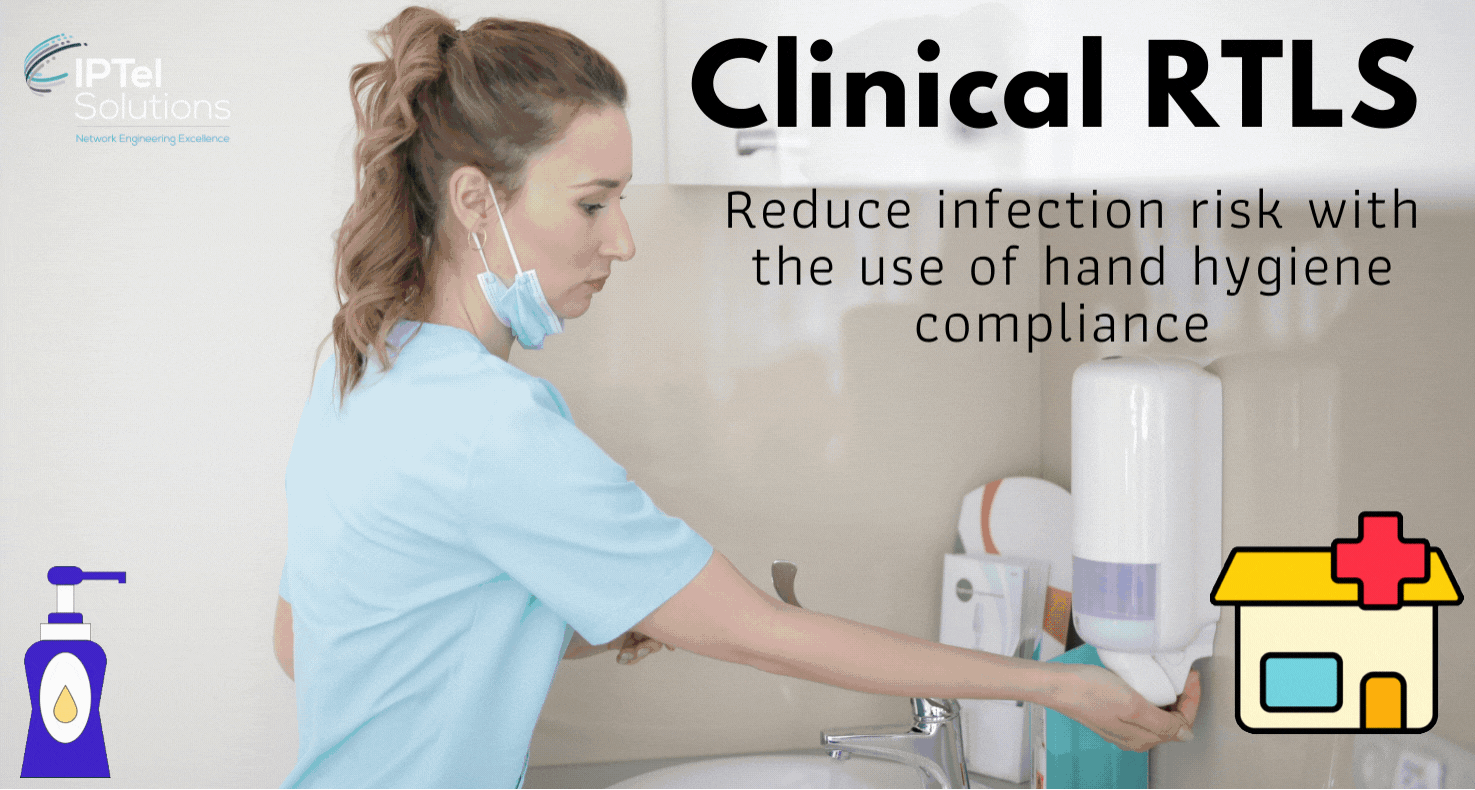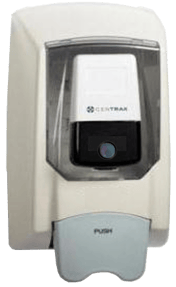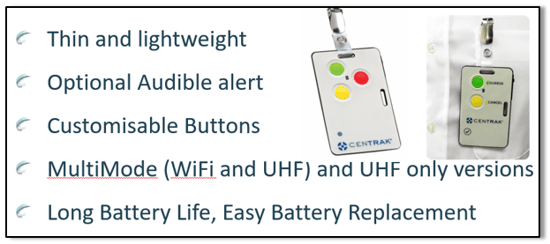Many patients are infected with various diseases during their stay in hospital. The most obvious way to reduce cross-infection is with hand washing.
Hospitals have a requirement to reduce the transmission rates of infection from patient to patient, but staff are always busy, going in and out of rooms, sometimes only very briefly.
Technology can help in tracking - and reminding staff to wash their hands.

Hospital Acquired Infection
Hospital acquired infection is a major cost to a hospital, where a patient is infected with something different from when they arrived. This is costly for the hospital, and reducing the occurrence of transmissions is an important issue for many hospitals.
There is of course a major human element to this, where the patients themselves remain in hospital much longer than necessary. Although not a catch all, simple hand washing between patient attendance has a major effect on the re-transmission of infection.
The question answered in this article is: How can location tracking technology be used to help in the fight against hospital acquired infection.
Hand Hygiene: The Problem

According to Hand Hygiene Australia, poor hand hygiene by both staff and patients are a major factor in transmitted infections.
A study done by the Center for Disease Control and Prevention says that hand washing with soap could protect 1 out of 5 young children with respiratory infections like pneumonia.
If staff go from patient to patient, without washing their hands, transmission of sometimes deadly infection can happen between patients.
Let's explore how technology can assist in the fight against transmission of infection.
Hand Hygiene: The Solution
Staff are meant to wash their hands before attending to a patient, however they're often busy and under stress and sometimes just plain forget. Hospitals run audits to check compliance, which often involves someone with a clipboard following the clinician around.
This isn't practical, is expensive and in any case any person being followed around will not display the same behaviour as when they are alone.

To assist in reducing the amount of infections contracted in hospitals due to staff not washing hands, CenTrak have designed a system which operates to track and remind staff of compliance of hand washing.
There are soap dispensers everywhere in hospitals, on the entrance to every patient room and scattered in all the hallways.
ASSOCIATED BLOGS:
Stage 1: The Staff Tag
The image above is of CenTrak's Staff Tag, which tracks a member of staff's location within the hospital. When a nurse enters a room, the system locates that the nurse is now in that specific room.
The tag can also be used for duress, or nursecall integration (cancelling a nursecall alarm and raising the presence lamp).
ASSOCIATED BLOGS:
Stage 2: The Intelligent Soap Dispenser
.gif?width=203&name=Clinical%20RTLS%20Use%20Cases%20(Instagram).gif) The soap dispenser should be used every time a clinician enters a patient room. Coupling the knowledge of the nurse being in the room and the soap dispenser not being used, the system can tell whether the nurse has washed their hands prior attending to a patient.
The soap dispenser should be used every time a clinician enters a patient room. Coupling the knowledge of the nurse being in the room and the soap dispenser not being used, the system can tell whether the nurse has washed their hands prior attending to a patient.
A base level of compliance can be gathered from this - these events can be collated for a few weeks to see the current background level of compliance.
The system can be set so that the tag beeps if the nurse is in the room more than a pre-defined period, but hasn't used the hygiene station.
At first this would seem annoying to the nurse, but in time, the nag that the tag provides produces an automatic response to wash your hands. The nurses clean their hands more often as the tag is there to remind them when they have forgotten to do so.
ASSOCIATED BLOGS:
The Payback
The hospital can now tell some interesting things. What were the levels of compliance prior, and after the system was introduced and began to beep to remind staff to wash their hands.
Depending on the level of anonymity the site decides to deploy the system with, stats on which soap dispenser has the highest compliance levels, or which staff have the lowest compliance levels, might be interesting.
For the start, its probably a wise move to keep the data generic - this provides rates of staff meeting the requirement, but doesn't victimise any particular member of staff.
When outbreaks of infection occur, the site can refer to the historic records to work out where it may have began - based on audits on which rooms staff attended to, but didn't wash their hands.
ASSOCIATED BLOGS:
Clinical Hand Hygiene: Conclusion
There's a range of Real Time Location Services (RTLS) solutions on the market, but there has neve been a better time than now to invest in improving technology to prevent transmissible diseases.
The result is the compliance data showing that hand washing has increased and the spread of infection between patients has decreased.
The downside is you will be buying more soap!
To find out more about our CenTrak Designs, please contact us.
ASSOCIATED BLOGS:


.gif?width=220&name=RTLS%20Nursecall%20Integration%20(Instagram).gif)


.jpg)
